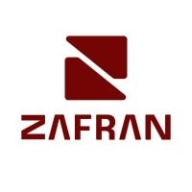


ARCON Secure Compliance Management and Microsoft Defender for Cloud compete in the security management and cloud protection domains. ARCON has the upper hand in compliance management and real-time monitoring, while Microsoft Defender is stronger in comprehensive cloud protection and integration with Azure services.
Features: ARCON Secure Compliance Management provides real-time monitoring, robust compliance tools, and regulatory adherence features. Microsoft Defender for Cloud offers extensive threat protection, seamless Azure integration, and a broad feature set for cloud security.
Ease of Deployment and Customer Service: ARCON focuses on quick deployment and personalized customer support for faster onboarding and issue resolution. Microsoft Defender benefits from integration within Microsoft's ecosystem, which streamlines deployment but might need more technical expertise and involves self-service support.
Pricing and ROI: ARCON is cost-effective with predictable licensing and focuses on compliance-driven ROI. Microsoft Defender has a potentially higher initial cost but offers significant ROI through its extensive features and cloud-native security, which are justified by its comprehensive protection and seamless integration.
| Product | Market Share (%) |
|---|---|
| Microsoft Defender for Cloud | 5.2% |
| Zafran Security | 1.0% |
| ARCON Secure Compliance Management | 0.2% |
| Other | 93.6% |



| Company Size | Count |
|---|---|
| Small Business | 26 |
| Midsize Enterprise | 7 |
| Large Enterprise | 45 |
Zafran Security integrates with existing security tools to identify and mitigate vulnerabilities effectively, proving that most critical vulnerabilities are not exploitable, optimizing threat management.
Zafran Security introduces an innovative operating model for managing security threats and vulnerabilities. By leveraging the threat exposure management platform, it pinpoints and prioritizes exploitable vulnerabilities, reducing risk through immediate remediation. This platform enhances your hybrid cloud security by normalizing vulnerability signals and integrating specific IT context data, such as CVE runtime presence and internet asset reachability, into its analysis. No longer reliant on patch windows, Zafran Security allows you to manage risks actively.
What are the key features of Zafran Security?
What benefits can users expect from Zafran Security?
In industries where security is paramount, such as finance and healthcare, Zafran Security provides invaluable protection by ensuring that only exploitable vulnerabilities are addressed. It allows entities to maintain robust security measures while allocating resources efficiently, fitting seamlessly into existing security strategies.
ARSIM – a risk, security and Information Management tool - is used for automated risk assessment and analysis. It enables a central repository of all IT risks and associated controls, automates information flow for risk assessments, provides aides for initiating necessary actions. These features ensure timely and efficient mitigation of risks. ARSIM Framework includes robust and scalable architecture, that is highly customizable, provides web and windows based user interfaces. It’s powerful connectors and agents work across technologies with several servers and databases.
Microsoft Defender for Cloud is a comprehensive security solution that provides advanced threat protection for cloud workloads. It offers real-time visibility into the security posture of cloud environments, enabling organizations to quickly identify and respond to potential threats. With its advanced machine learning capabilities, Microsoft Defender for Cloud can detect and block sophisticated attacks, including zero-day exploits and fileless malware.
The solution also provides automated remediation capabilities, allowing security teams to quickly and easily respond to security incidents. With Microsoft Defender for Cloud, organizations can ensure the security and compliance of their cloud workloads, while reducing the burden on their security teams.
We monitor all Vulnerability Management reviews to prevent fraudulent reviews and keep review quality high. We do not post reviews by company employees or direct competitors. We validate each review for authenticity via cross-reference with LinkedIn, and personal follow-up with the reviewer when necessary.